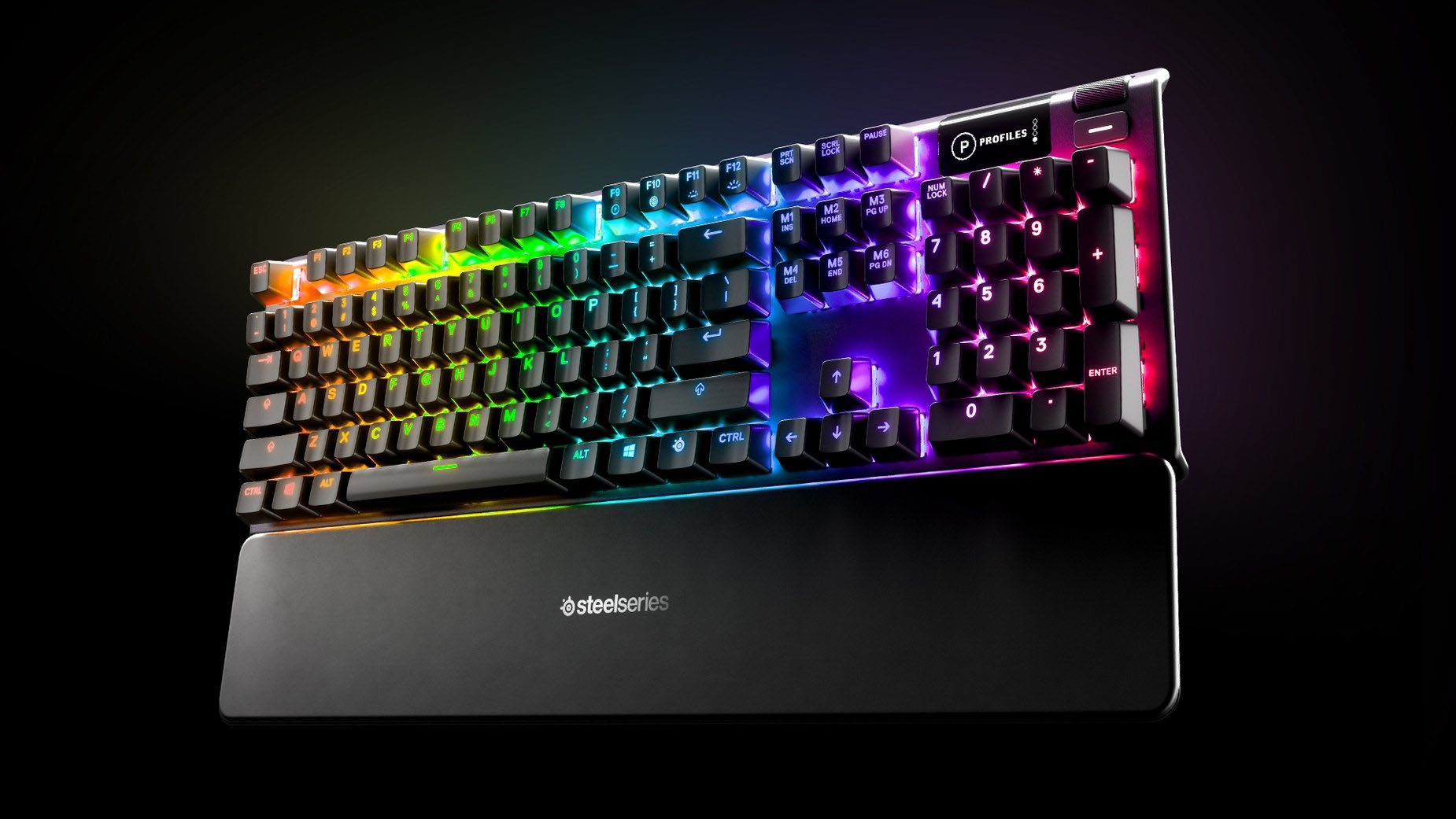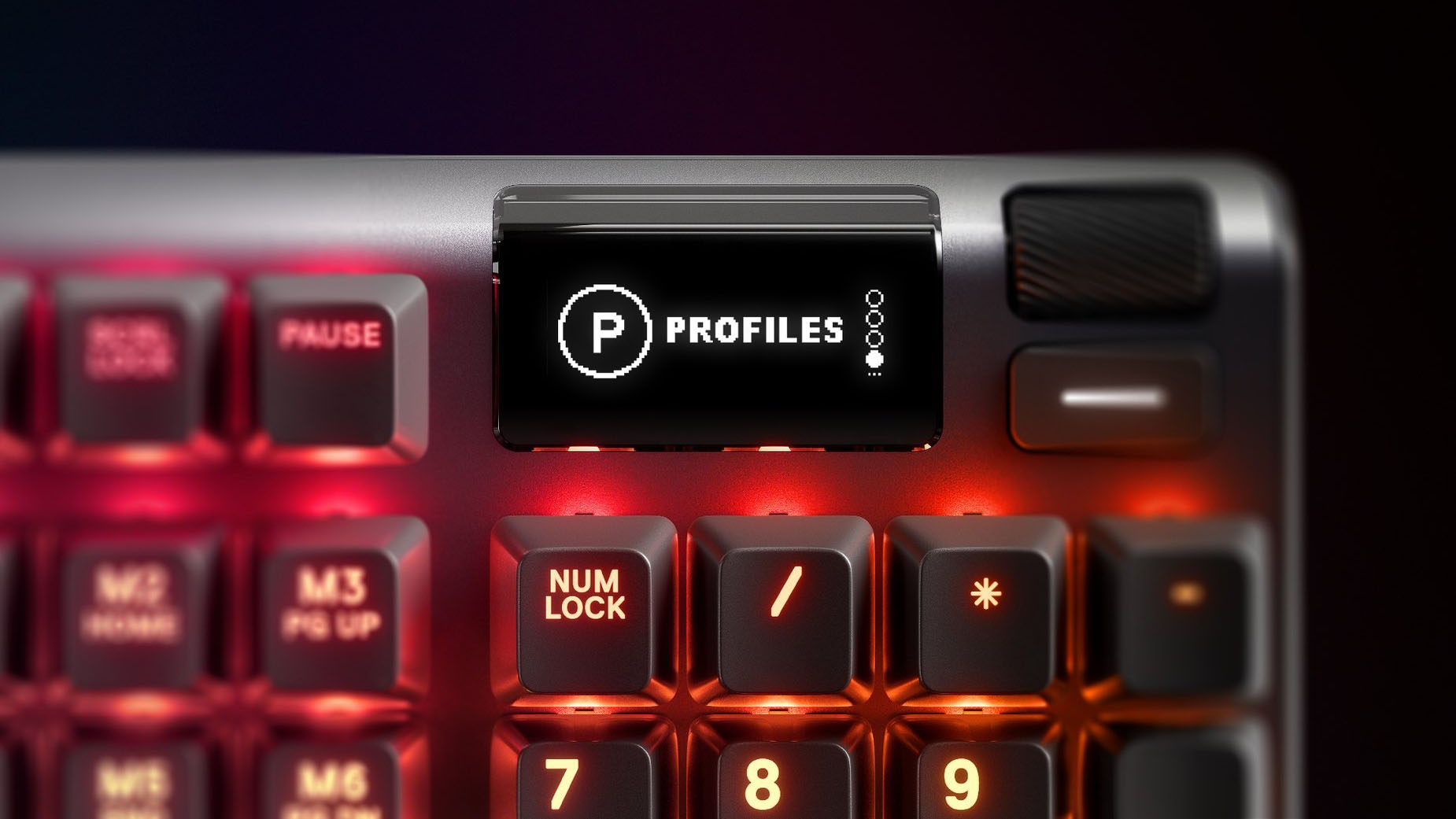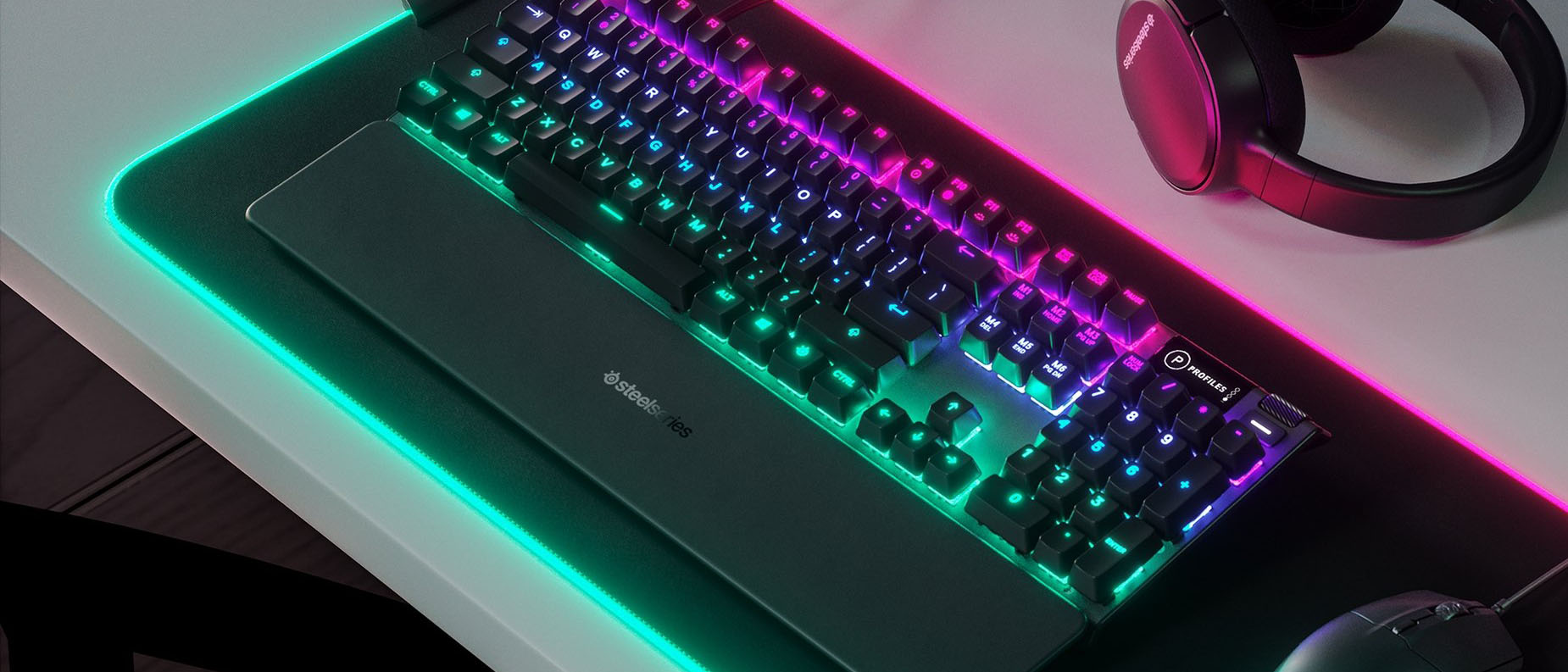Tom's Guide Verdict
If you want a taste of the mechanical keyboard lifestyle without committing completely, the SteelSeries Apex 5 gets the job done.
Pros
- +
Reasonable price
- +
Good in-game performance
- +
Smart multimedia key
Cons
- -
Membrane/mechanical hybrid doesn't add much
- -
Somewhat dull lighting
- -
Superfluous OLED screen
Why you can trust Tom's Guide
Every once in a while, keyboard companies find the "membrane" and "mechanical" labels too restrictive and vow to cast off the categorization shackles once and for all. We had Topre switches; we had the Razer Ornata; now we have the SteelSeries Apex 5 ($100).
This keyboard successfully combines springy mechanical switches with a membrane design underneath, although I can't quite figure out why. It's not all that much cheaper than a fully mechanical keyboard, and the comfort and performance aren't drastically different from anything else in its price range. The RGB lighting is a little dull, and the built-in OLED screen doesn't really do much.
Taken as a whole, the Apex 5 isn't bad. It types well and responds perfectly in the game. The software lets you reprogram each key, and its multimedia button is a clever alternative to a full suite of media keys.
In a world where you get great mechanical keyboards for $120 or so, a $100 hybrid is a tough sell. But if you want a taste of the mechanical lifestyle without committing completely, the Apex 5 gets the job done.
SteelSeries Apex 5 design
The Apex 5 measures 17.5 x 5.5 inches, with a 3.1-inch detachable wrist rest. I have to give some props to the magnetic wrist rest right off the bat, as it's easy to attach, easy to detach and extremely comfortable while you're using it. It's a rigid rest with a matte surface and provides excellent wrist support without using foam, which is prone to wear and tear.

Beyond that, the Apex 5 is a pretty standard full-size keyboard, with only two extra additions in the upper-right corner. One is a small, clickable volume dial, which is extremely helpful; the other is what SteelSeries calls a "multimedia button." Instead of cluttering up valuable keyboard space with three or four separate media buttons, this single button lets you play, pause and skip tracks, depending on how many times you press it in rapid succession. My learning curve was less than an afternoon, and I started to wonder why other keyboard manufacturers have been content to let multiple buttons take up so much space.
The other interesting feature is the small OLED screen in the upper right. This black-and-white 128 x 40 screen lets you program in a little animated icon, which is kind of useful for telling apart multiple profiles. (You can't control any keyboard or game functions with this screen the way you can with fancier SteelSeries keyboards.) But, you could just as easily differentiate profiles with colored lighting, and it's tough to find images that look good on such a small screen. Even after shrinking a United Federation of Planets logo to the proper size and resolution, it looked grainy and indistinct. As with previous SteelSeries keyboards, I feel like the Apex 5's OLED screen probably adds a lot of cost without conferring much benefit.
SteelSeries Apex 5 keys
The oddest thing about the Apex 5 is its inclusion of SteelSeries' "hybrid mechanical gaming switches." These blue-capped switches try to mimic the loud sound and tactile feel of Cherry MX Blues and get about halfway there. There's indeed a little noise, and you need to press a key only halfway down to register a command, but the Apex 5 doesn't really feel like a traditional mechanical model.

That's because underneath the switches, there's still a series of electrical membranes that process everything. SteelSeries claims that this marries the "feel" of a mechanical switch to the "smoothness" of a membrane version. I don't really see the benefit, but your mileage may vary.
In any case, the keys do a fairly good job when it comes to typing. On a Typing.com test, I scored 110 words per minute with 97% accuracy, compared with 119 wpm with 98% accuracy on my usual Logitech G915. The Apex 5 keys didn't spring back as quickly as I would have liked, and the layout of the keyboard made it easy to hit an adjacent key by mistake.
SteelSeries Apex 5 features
Aside from the aforementioned OLED screen, most of the Apex 5's features come courtesy of the SteelSeries Engine 3 software. One big advantage of the Apex 5 over some comparable keyboards is that you can reprogram any key on the whole device, not just a row of function keys. You can also create individual profiles for various games, program macros and differentiate between onboard profiles and those you store on your computer. These are all good features.

I have a more mixed opinion about the RGB lighting. Like many full mechanical keyboards, the Apex 5 offers per-key lighting with a full RGB spectrum. But, unlike many full mechanical keyboards, the lighting is not that bright. In a well-lit office, the keyboard's rainbow wave pattern looked a little washed out — the bottom row of keys, in fact, looked only half-lit, especially the larger icons on the Windows and SteelSeries function keys.
On the other hand, you can program some extremely pretty patterns, with additional options for what the keyboard should do during periods of inactivity. (Most other keyboards will simply power off the lighting; you can set a dormant Apex 5 to a static color, or even a pattern.) This is, perhaps, the strongest argument I can think of for buying the Apex 5: Full RGB mechanical keyboards can cost up to $180. Here, you can get a similar feel and most of the same lighting options for a full $80 less.
SteelSeries Apex 5 performance
One area where I had no qualms about the Apex 5 was its in-game performance. I put the keyboard through its paces with Overwatch, Age of Empires II: Definitive Edition, Thronebreaker: The Witcher Tales and World of Warcraft, and the keyboard did well across a variety of genres. I could activate special abilities on a first-person shooter battlefield, and I could command villagers to construct buildings in a real-time strategy game. The Apex 5 performed exactly as expected.
Hardcore massively multiplayer online (MMO) game fans might want to invest in a keyboard with an extra row of macro keys, since the Apex 5 sticks to a pretty standard format. But since you can reprogram any button, you could just as easily design macros for the function keys, or the number pad, and do just as well.
Bottom line
Aside from its somewhat lower price, I can't think of a great reason to combine mechanical key switches with a membrane framework. The device feels like a compromise, both tactilely and metaphorically. But as compromises go, the Apex 5 is a fairly agreeable one. Typing and gaming feel relatively good, and the device is admirably straightforward. The bells and whistles are mostly worthwhile, and the ones that aren't don't hurt the overall package.
If RGB lighting isn't a concern, you can get fully mechanical models from companies like Razer, Corsair and Logitech for about $120, and in the long run, they may prove to be more durable — and more comfortable — than the Apex 5. But if you want something that also looks pretty, the Apex 5 might be one of your cheaper options.
Marshall Honorof is a senior editor for Tom's Guide, overseeing the site's coverage of gaming hardware and software. He comes from a science writing background, having studied paleomammalogy, biological anthropology, and the history of science and technology. After hours, you can find him practicing taekwondo or doing deep dives on classic sci-fi.


